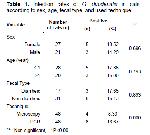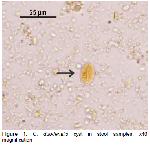Giardia duodenalis is commonly seen in cats
9. Despite the many advantages of having a pet, close contact between humans and cats and dogs can cause zoonotic diseases
6,8. The prevalence of infection varies depending on the age of the animals, clinical condition, shelter conditions, geographical region and diagnostic methods used
11.
In the world, different results have been reported in studies to determine the prevalence of G. duodenalis in cats. Respectively, 5% and 80% by microscopic and PCR methods in Australia 2, 13.1% by PCR method in China 15, 8.18% in Japan 14, in Italy 4.4% and 6.1% by IFAT and PCR method respectively 13, 9.2% by PCR method in Spain 12, 3.9% by PCR method in Poland 8 and a prevalence of 2% and 3.33%, respectively were reported in Iran by microscopic and immunochromatography assay methods 7.
In Turkey, studies to determine the prevalence of Giardia spp. in cats are very limited. Some studies report its presence at the rate of 4% as G. cati 16 in Ankara, and 8% as G. intestinalis in a study including the Samsun and Kayseri provinces 17. In another study in the Central Anatolia Region where microscopic examination, rapid immunochromatographic test, and PCR methods were used, the prevalence of G. duodenalis was reported to be 37.3%, 50% and 29.4%, respectively 9.
Microscopic, serological and molecular methods are used in the diagnosis of the disease 1,7,9,11, among which is reported that the PCR method is more sensitive 2,7. In this study, microscopic examination and PCR methods were used for diagnosis. As a result of the study, 8.33% positivity was detected by microscopic examination and 16.67% by PCR method. The results of this study are similar to the results of the studies carried out by Önder et al. 17 and Xu et al. 15. However, it is nonetheless lower than the results of the study by McGlade et al. 2, while it was higher than the ones carried out by Sursal et al. 9, Suzuki et al. 14, Paoletti et al. 13 and Gil et al. 12. Differences between studies may be caused by different geographical conditions, the diagnostic procedure used, the age of the animals and the population.
While some researchers 7,12,20 found more positivity in males, some 6,9 reported more positivity in females. In this study, compatible with the findings of Sursal et al. 9 and Procesi et al. 6, higher positivity was detected in females.
In the study by Li et al. 20 a statistically significant difference between the sexes was reported, while other researchers 6,7,9,12 stated no significant difference. In this study, no statistically significant difference was found between the sexes, as well. (P>0.05).
Procesi et al. 6 reported a higher prevalence in those older than one year and stated that this difference was statistically significant. On the other hand, some other researchers 7,8,12,14,15 show that the prevalence is higher in those under the age of one, and there is no statistically significant difference between age groups. In this study, a higher prevalence was found in cats under one year of age, as well (P>0.05). The low prevalence in cats over one year old may be due to the development of humoral immunity with advancing age.
In a study by Li et al. 20, more positivity was found in the non-diarrheic group than in the diarrheic group (P>0.05). On the other hand, in a study by Mosallanejad et al. 7, more positivity was found in the diarrheic group and a statistically significant difference was reported. In this study, more positivity was detected in the diarrheic group (17.65%) than in the non-diarrheic group (16.13%), but no statistically significant difference was detected.
As a result, the prevalence of G. duodenalis in stray cats in Mardin province was revealed in this study. The results show that cats can be a potential reservoir for human infection and demonstrate a potential risk to public health. Further studies are needed to investigate the general epidemiological status of giardiasis in domestic and stray cat populations.
Acknowledgement
The author expresses her deepest thanks to the Assoc.Prof. Adnan AYAN for supporting this study.





